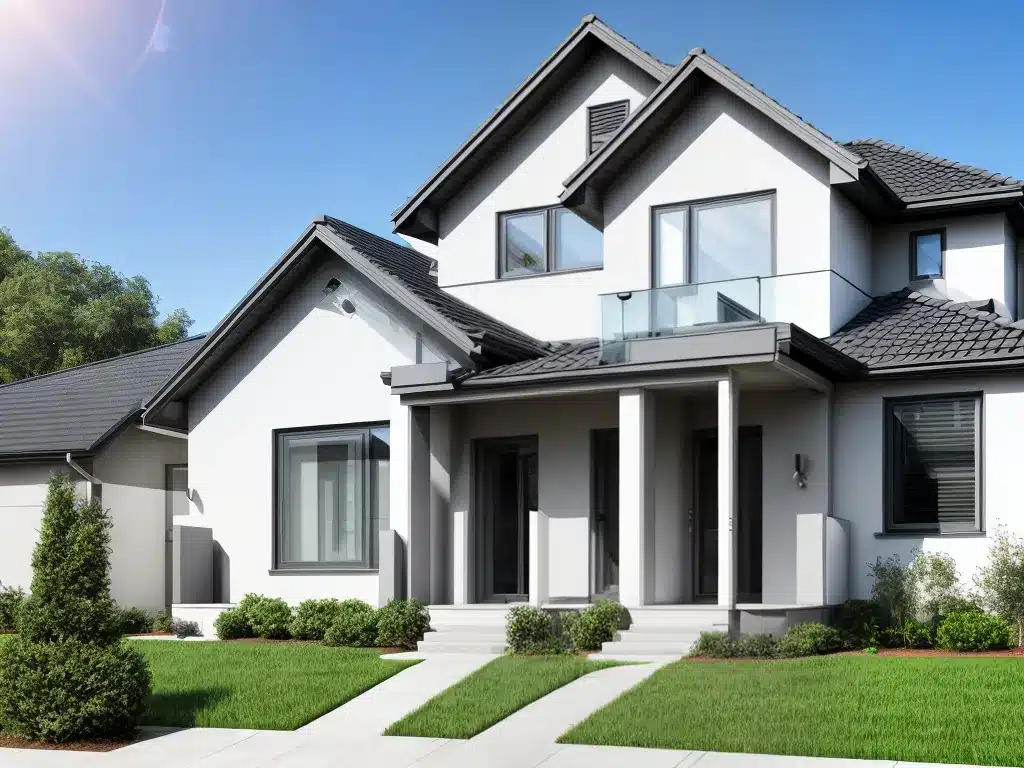
What is a Mesh Network?
A mesh network is a type of decentralized network where each node connects directly, dynamically and non-hierarchically to as many other nodes as possible. This allows for continuous connections and reconfiguration around broken or blocked paths by jumping from node to node until the destination is reached.
In a home, a mesh network uses multiple wireless access points installed around the house to provide full Wi-Fi coverage. The access points connect to each other to form a mesh topology, providing redundancy and multiple paths back to the main router. This provides better coverage and eliminates Wi-Fi dead zones compared to a single wireless router.
Key features of mesh networks:
- Multiple access points work together to form a mesh topology
- Access points can connect wirelessly (or wired) to expand coverage
- Self-configuring and self-healing network
- Dynamic rerouting around broken paths and dead zones
- Nodes can act as both routers and clients
- Simple setup – no need to configure each node
Benefits of a Mesh Network at Home
There are several benefits of having a mesh network in your home:
1. Eliminates Wi-Fi Dead Zones
The main benefit is eliminating Wi-Fi dead zones in your home by providing overlapping coverage between multiple access points. Instead of a single router, mesh nodes placed around the house ensure you have strong Wi-Fi signal in every room.
2. Better Range and Coverage
Mesh networks have better overall range and coverage since multiple access points work together. This covers a much larger area than a single router.
3. Easy to Set Up
Mesh systems are very easy to set up compared to traditional routers. Simply plug in and power on the mesh points – the network automatically configures itself. No need for complex configurations.
4. Reliability Through Redundancy
The mesh topology provides redundancy and reliability. If one node fails, the others can still provide connectivity through alternative paths. This self-healing capability ensures connectivity remains high.
5. Speed and Performance
With multiple access points, network traffic can be distributed efficiently. Combined with dynamic rerouting, this can provide faster speeds compared to single router networks. Multiple nodes increases overall bandwidth and capacity.
6. Seamless Roaming
As you move through the house, your device can seamlessly switch connections between access points. This provides a smooth and continuous experience without any drops in connectivity.
7. Flexible Expandability
It’s easy to expand mesh networks by adding more nodes. This incremental expandability provides for easy and flexible growth of coverage and capacity.
Considerations When Choosing a Mesh System
Here are some things to consider when selecting a mesh network system for your home:
-
Coverage area – Make sure the mesh kit includes enough nodes to cover your entire house and yard.
-
Wireless standards – Newer WiFi 6 (802.11ax) mesh systems provide faster speeds than WiFi 5 (802.11ac).
-
Bandwidth requirements – More demanding households may require tri-band or quad-band mesh kits.
-
Number of clients – The mesh system should support all of your connected devices. High end options can handle 100+ clients.
-
Security protocols – Look for WPA3 encryption for best security.
-
Smart home integration – Some systems can double as a smart home hub for controlling devices.
-
Ease of management – The mesh network should be configurable through an app for monitoring and settings.
-
Budget – Home mesh systems range from $100 for a simple dual-band model to $400+ for high end tri-band kits.
Setting Up Your Mesh Network
Setting up a mesh wifi system at home is quick and straightforward:
-
Place your primary mesh router in a central area where your internet connection enters the home.
-
Connect it to your modem with an ethernet cable. This will be the main router that connects your mesh network to the internet.
-
Plug in and power on the mesh satellite nodes around your house. I like to place a node in each bedroom for full coverage.
-
The nodes will automatically connect wirelessly to the main router. All mesh points will sync up to provide one unified network.
-
Download the mesh system’s app to your smartphone or tablet. This lets you manage the network.
-
Connect your devices to the mesh network SSID. There’s no need to switch networks as you move around – the nodes work together seamlessly.
-
Use the app to monitor signal strength and make changes like port forwarding or parental controls.
That’s it! The network will self-optimize coverage and speeds. Expand it anytime by adding more mesh nodes.
Optimizing Your Mesh Network
To get the most out of your new mesh wifi system, here are some optimization tips:
-
Elevate nodes for better propagation – place them high up or wall mount if possible.
-
Try different locations to minimize dead zones – coverage can vary based on placement.
-
Maintain line of sight between nodes so signals aren’t blocked by walls and objects.
-
Minimize obstructions – keep areas around nodes clutter-free for best performance.
-
Place a node in high traffic areas like living room to provide full bandwidth where needed most.
-
For desktop PCs, use ethernet backhaul to connect to a node instead of wireless for faster and more reliable connectivity.
-
Connect nodes to each other using ethernet instead of wireless links if possible, to maximize available Wi-Fi capacity.
-
Update firmware to latest version on all nodes for optimal stability and speed.
-
Reboot nodes periodically – this keeps the mesh network optimized.
-
Consider MU-MIMO enabled nodes for increased throughput when connecting multiple clients simultaneously.
With good placement and setup, your mesh network can deliver fast, reliable whole home coverage. Proper optimization ensures your home Wi-Fi performs at its best. Enjoy the convenience of seamless roaming and elimination of dead zones!












